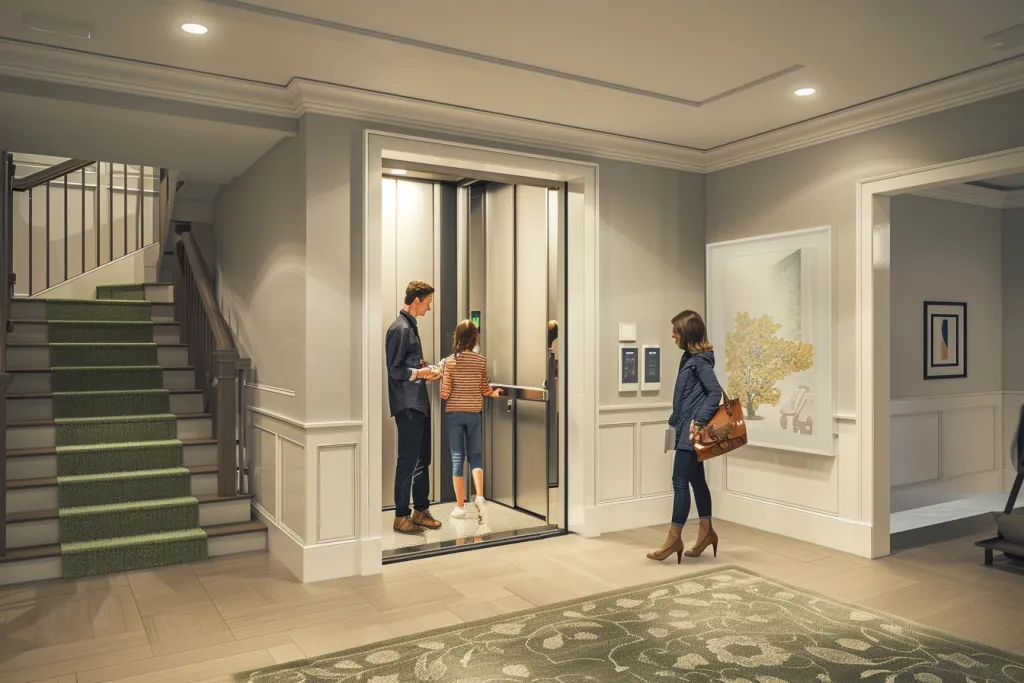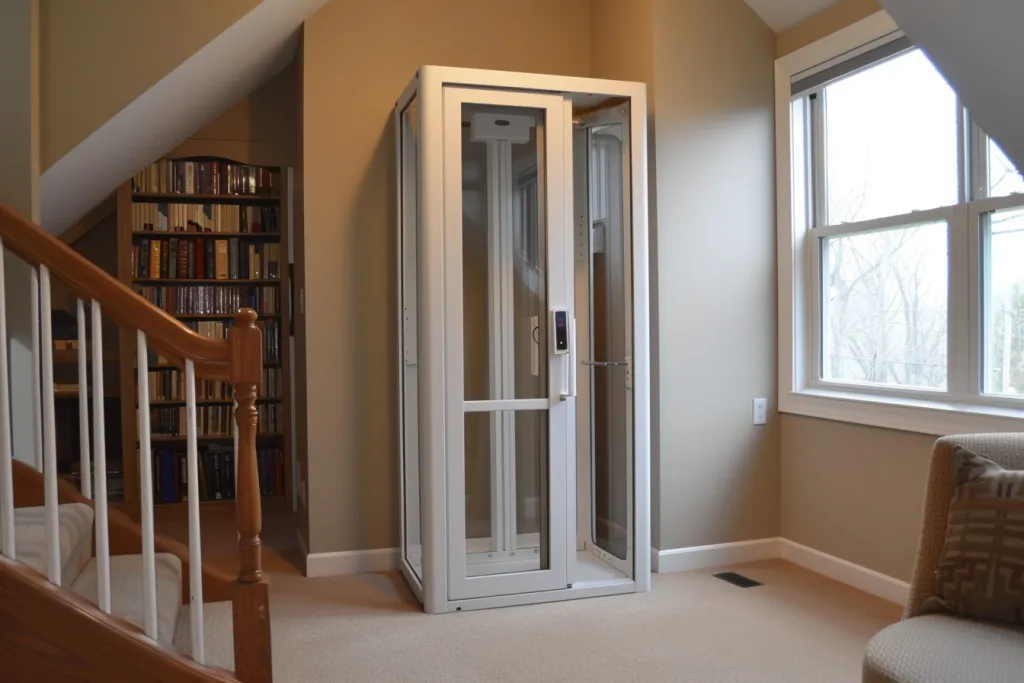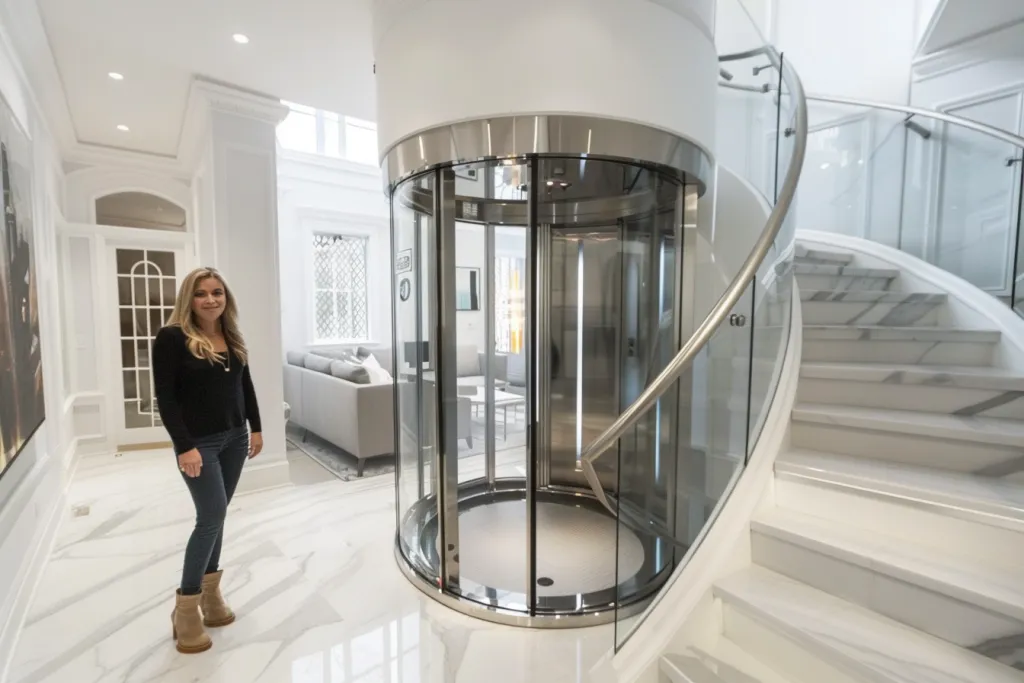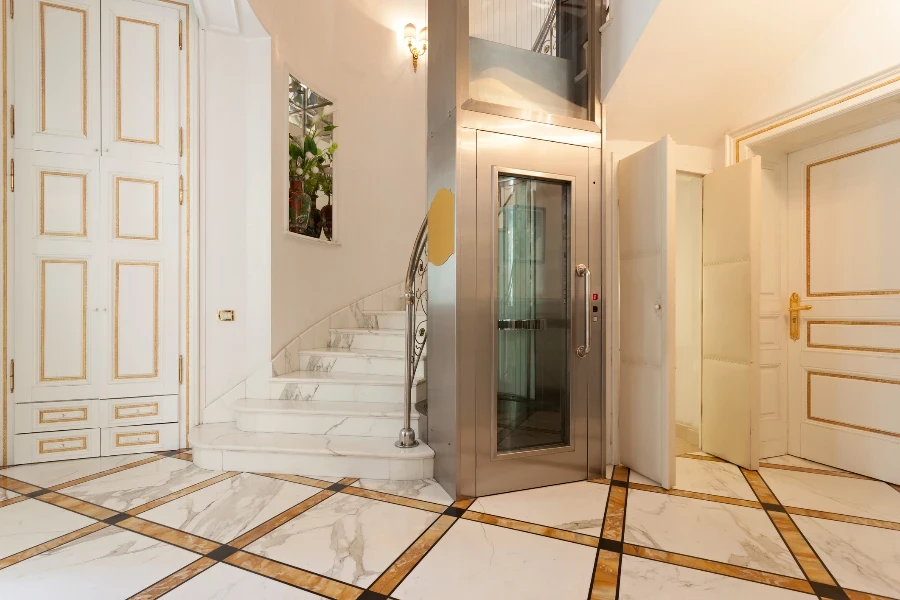Domestic lifts, a luxury once reserved for the elite, have become increasingly popular in modern homes. These compact elevators offer convenience, mobility, and a touch of sophistication, transforming how we navigate our living spaces. This guide delves deep into the world of domestic lifts, covering their operation, usage, costs, and top options available, providing all the information you need to make an informed decision.
Table of Contents:
– What is a domestic lift?
– How do domestic lifts work?
– How to use a domestic lift
– How much does a domestic lift cost?
– Top domestic lifts
What is a domestic lift?

A domestic lift is a small elevator designed for residential use. Unlike commercial elevators, these lifts are compact, requiring minimal space and structural modifications to the home. They can be installed in various settings, from traditional houses to modern apartments, providing an efficient solution to vertical mobility challenges within a home. Domestic lifts are not just functional; they are also designed to blend seamlessly with the interior aesthetics, offering a range of customization options.
The primary purpose of a domestic lift is to enhance accessibility across different floors of a home, making them an excellent addition for families with elderly members or individuals with mobility issues. Furthermore, they add a significant value to a property, making it an attractive investment for homeowners.
How do domestic lifts work?

Domestic lifts operate on several mechanisms, depending on the model and design. The most common types include hydraulic, traction, and pneumatic vacuum elevators. Hydraulic lifts use a pump to move fluid in a cylinder, raising or lowering the lift car. This system is known for its smooth operation and reliability but requires a separate machine room, which can be a drawback in terms of space.
Traction elevators, on the other hand, use a counterweight system, where the lift car is balanced by a counterweight, reducing the motor’s workload. This design is more energy-efficient and can be installed without a machine room, making it a popular choice for residential settings.
Pneumatic vacuum elevators utilize air pressure differences to move the lift car between floors. They are the most aesthetically pleasing and require the least amount of space, with no need for a pit or machine room. However, they typically have a smaller capacity and a higher price tag.
How to use a domestic lift

Using a domestic lift is straightforward, designed with user-friendliness in mind. To operate, users simply need to call the lift to their floor using the call button, enter the lift car, and select their desired floor. Safety features are paramount in domestic lifts, including emergency stop buttons, telephone or communication systems, and automatic doors to prevent accidents.
Maintenance is also a critical aspect of using a domestic lift. Regular servicing by certified technicians ensures the lift operates safely and efficiently. Homeowners should familiarize themselves with their lift’s specific maintenance schedule and adhere to it diligently.
How much does a domestic lift cost?

The cost of a domestic lift varies widely based on factors such as the type of lift, its capacity, the number of floors it serves, and the level of customization required. On average, installing a domestic lift can cost anywhere from $20,000 to $50,000. Hydraulic and traction elevators tend to be on the lower end of the cost spectrum, while pneumatic vacuum elevators can be more expensive due to their advanced technology and aesthetic appeal.
It’s important to consider not only the initial installation cost but also the long-term maintenance and operation costs. Energy-efficient models and those with lower maintenance requirements can offer significant savings over time.
Top domestic lifts

When it comes to choosing the best domestic lift for your home, several top contenders stand out. Stiltz Home Lifts offer a range of stylish and compact models that are easy to install and operate. Thyssenkrupp’s Home Elevator Solutions are known for their innovative technology and customization options, providing a perfect blend of functionality and design. Lastly, the PVE Pneumatic Vacuum Elevator is a leader in aesthetic design and space efficiency, making it an excellent choice for those looking for a statement piece in their home.
Conclusion:
Domestic lifts offer a perfect solution for enhancing home accessibility and adding a touch of luxury. Understanding how they work, their usage, costs, and the top models available can help homeowners make an informed decision tailored to their needs and preferences. With the right domestic lift, navigating between floors can become effortless, safe, and stylish.




